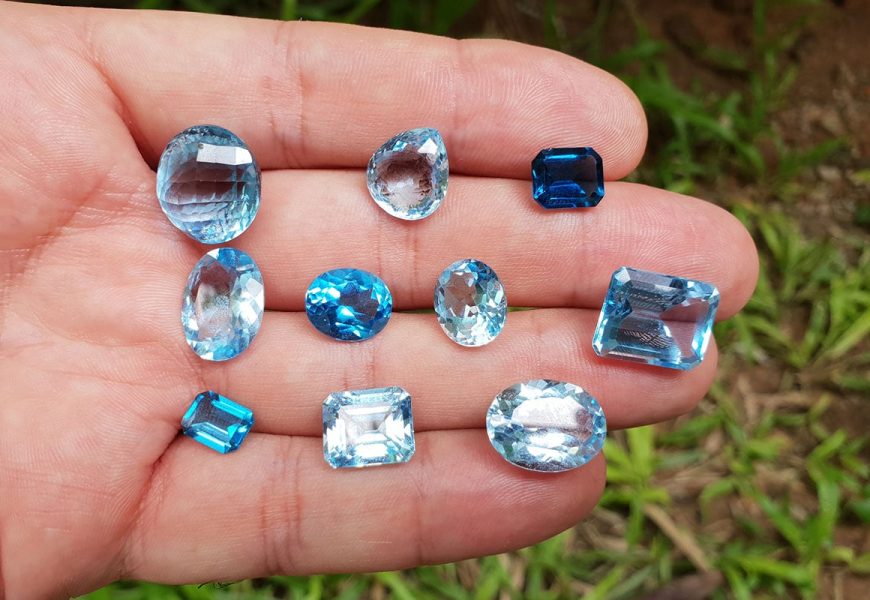Amethyst has been cherished for centuries for its beauty and mystical properties. As the birthstone for February, it holds a special place in many people’s hearts, especially for those born in that month. However, with the rise of synthetic gemstones like synthetic corundum, it’s worth exploring the advantages of both amethyst and synthetic corundum, particularly in the context of birthstones. This article will delve into the characteristics, advantages, and uses of amethyst birth month and synthetic corundum, comparing the natural and synthetic varieties of gemstones.
Understanding Amethyst as a Birthstone
Amethyst is one of the most popular and stunning gemstones, often recognized by its vibrant purple color. As the birthstone for February, it carries a rich history and cultural significance. In the ancient world, amethyst was believed to have protective and healing properties, warding off intoxication and promoting calm and clarity. Today, people continue to wear amethyst for its beauty, as well as its connection to balance and peace.
The primary appeal of amethyst comes from its mesmerizing color, ranging from pale lavender to deep violet. This gemstone is a variety of quartz and owes its purple hue to iron impurities within its crystal structure. Amethyst is also relatively affordable compared to other precious stones, making it an attractive choice for both jewelry lovers and those looking for a meaningful gift.
The Allure of Synthetic Corundum
While amethyst remains a highly sought-after gemstone, synthetic corundum has emerged as a competitor in the gemstone industry. Synthetic corundum is a lab-created version of natural corundum, the mineral family that includes rubies and sapphires. This synthetic gemstone is produced using advanced technologies that replicate the natural crystal growth process, creating stones that are virtually identical to their natural counterparts in terms of appearance and durability.
One of the key advantages of synthetic corundum is its affordability. Natural rubies and sapphires can be quite expensive, but synthetic corundum offers a similar aesthetic at a fraction of the cost. Moreover, synthetic corundum can be produced in a variety of colors, making it a versatile option for creating birthstones, including those for February.
Amethyst Birth Month: A Timeless Tradition
For those born in February, amethyst is more than just a gemstone; it’s a symbol of their birth month. As a birthstone, amethyst is believed to bring good fortune and positive energy to those who wear it. In addition to its spiritual and metaphysical properties, amethyst is often associated with calmness, clarity, and balance. It is said to help enhance intuition and creativity, while also offering emotional healing and stress relief.
One of the significant advantages of choosing amethyst as a birthstone is its wide range of colors, from light lavender to deep purple, allowing individuals to select a shade that reflects their personality and style. Amethyst is also a durable gemstone, rating 7 on the Mohs scale of hardness, which means it is suitable for daily wear in jewelry like rings, necklaces, and bracelets.
Benefits of Synthetic Corundum as a Birthstone
While amethyst has its advantages as the birthstone for February, synthetic corundum offers several distinct benefits. These include its affordability, durability, and versatility in color choices. For those looking for a gemstone with the same durability as ruby or sapphire but at a much lower price point, synthetic corundum is a great option.
Affordability: Synthetic corundum is typically much more affordable than natural gemstones. Because it is lab-created, it eliminates the cost associated with mining, making it an appealing choice for those seeking a beautiful gemstone without breaking the bank.
Durability: Synthetic corundum is incredibly durable, with a Mohs hardness rating of 9, just below that of diamonds. This makes it an excellent choice for those who want a long-lasting gemstone that can withstand daily wear. Like natural rubies and sapphires, synthetic corundum resists scratching and abrasion, ensuring that it maintains its brilliance over time.
Variety of Colors: One of the greatest advantages of synthetic corundum is its ability to be created in a wide array of colors. While amethyst is typically purple, synthetic corundum can be produced in any color, allowing for greater customization of birthstone jewelry. For those who prefer a unique and personalized birthstone, synthetic corundum offers flexibility that natural gemstones cannot.
Amethyst vs. Synthetic Corundum: Which Is the Better Option?
When comparing amethyst and synthetic corundum, the choice largely depends on personal preference and budget. Amethyst, as a natural gemstone, carries historical and metaphysical significance, making it an attractive option for those seeking a birthstone with deep symbolic meaning. Its affordability, beauty, and rich purple hues make it an ideal choice for those born in February.
On the other hand, synthetic corundum offers many of the same advantages in terms of durability and appearance but at a lower price point. For those who appreciate the brilliance of rubies and sapphires but want to save money, synthetic corundum is a great alternative. Additionally, its versatility in color makes it an excellent option for people who want to customize their birthstone jewelry.
Symbolism: Amethyst is deeply connected to the month of February, while synthetic corundum may not have the same level of historical or cultural significance. However, if personal meaning is less of a priority, synthetic corundum offers similar aesthetic appeal with a modern twist.
Durability and Maintenance: Both amethyst and synthetic corundum are durable, but synthetic corundum holds a slight edge in terms of hardness. Those who want a gemstone that can withstand heavy wear may prefer synthetic corundum, especially since it resists scratches and damage more effectively.
Affordability: For those on a budget, synthetic corundum is undoubtedly the more cost-effective choice. While amethyst is affordable compared to many gemstones, synthetic corundum provides an even more economical alternative without sacrificing quality.
Conclusion: Which Birthstone Is Right for You?
In the debate between amethyst birth month and synthetic corundum, both gemstones offer unique advantages. Amethyst holds deep cultural significance as the birthstone for February, offering beauty, symbolism, and a sense of connection to tradition. It is a timeless gemstone that has been cherished for centuries and remains a popular choice for February birthdays.
On the other hand, synthetic corundum provides an affordable and durable alternative for those seeking a gemstone with similar aesthetic qualities to rubies and sapphires. With its versatility in color and resistance to wear and tear, synthetic corundum is an excellent option for those who want a long-lasting, customizable birthstone without the high price tag.
Ultimately, whether you choose amethyst or synthetic corundum will depend on your priorities—whether it’s the traditional allure of amethyst or the practicality and affordability of synthetic corundum. Both gemstones offer something valuable and beautiful, making them excellent choices for any February birthday.









